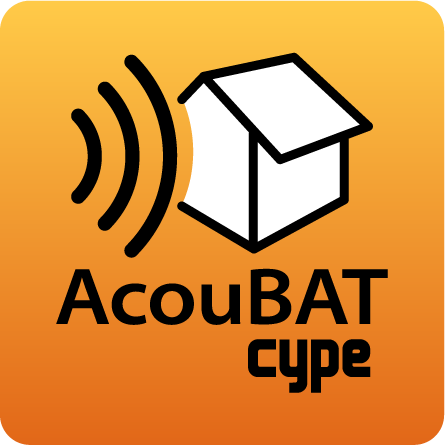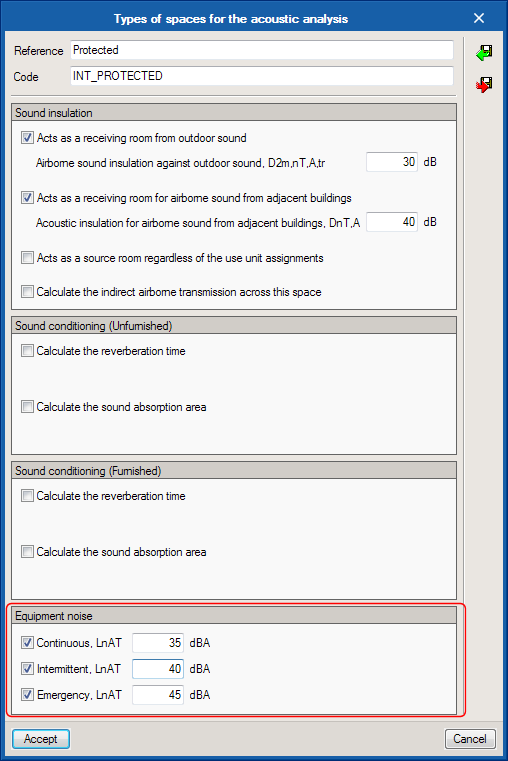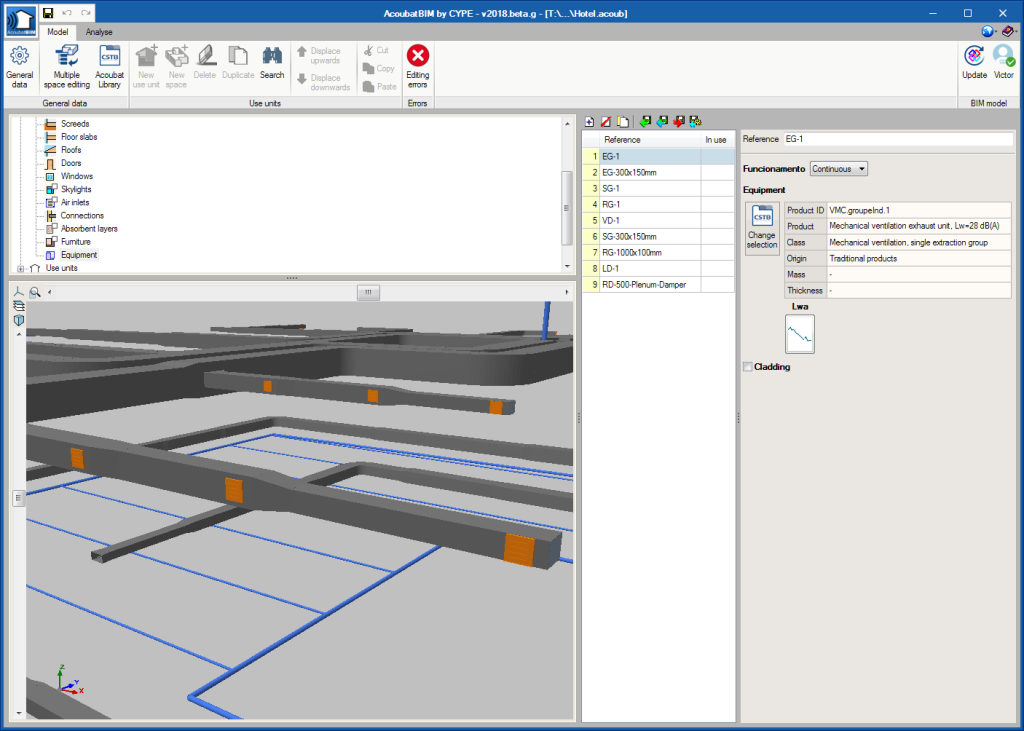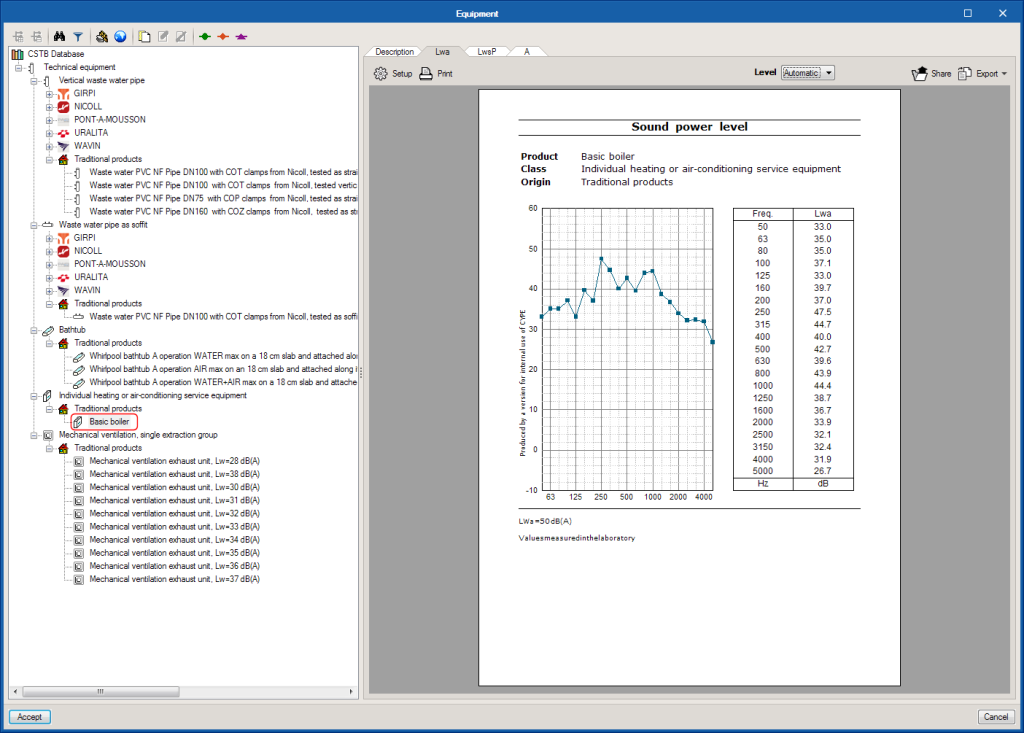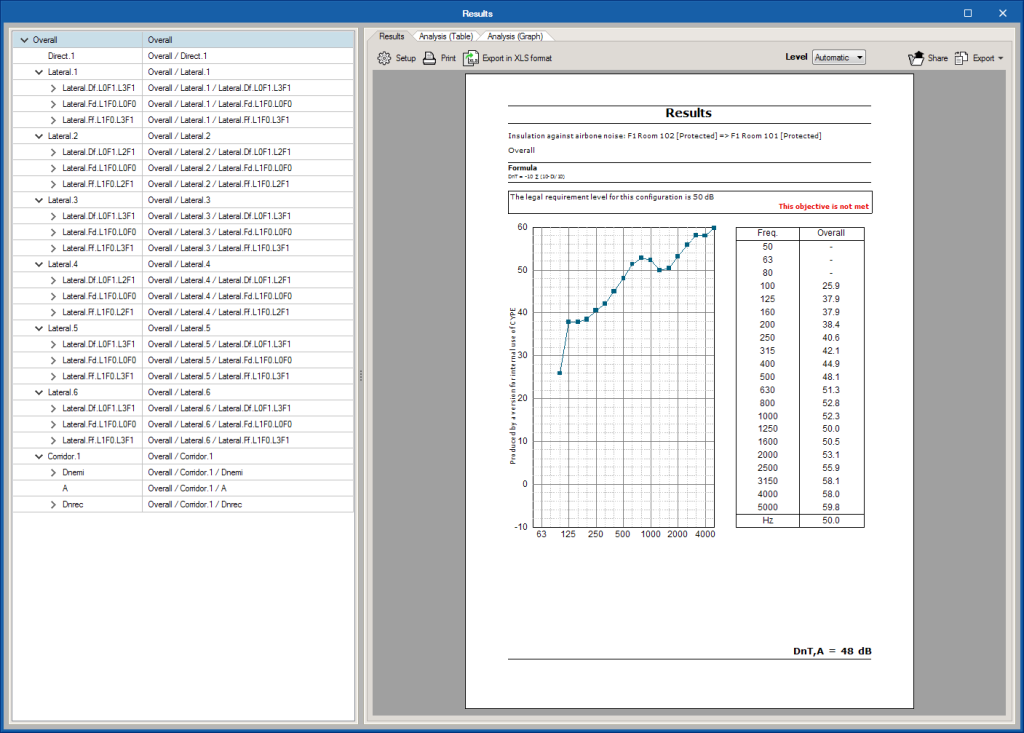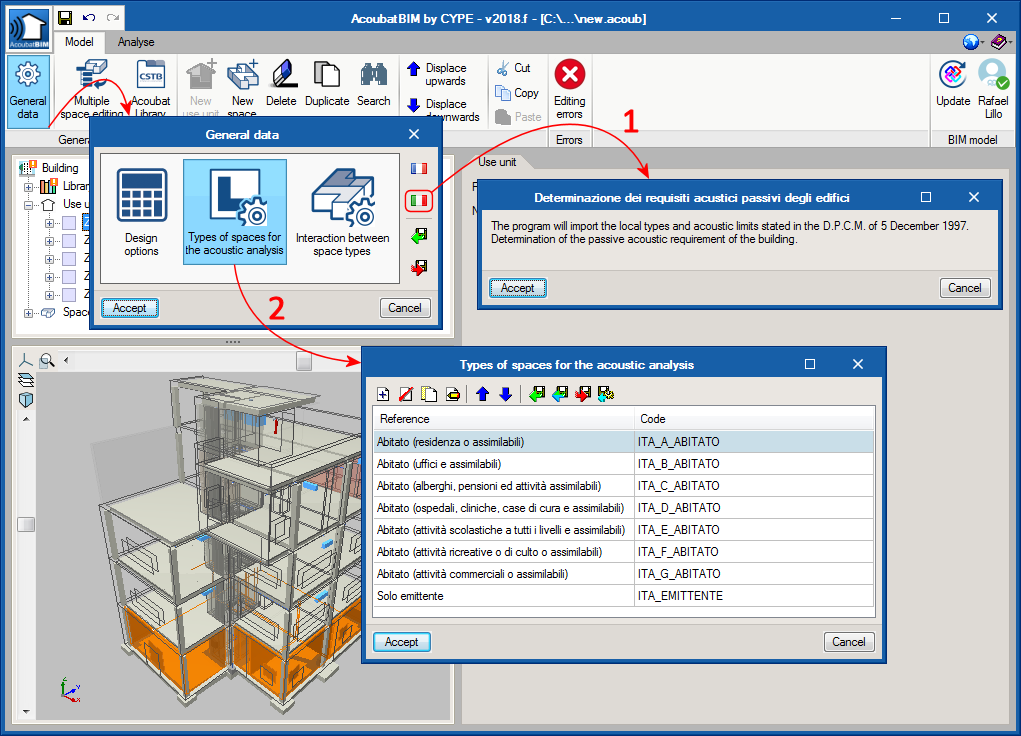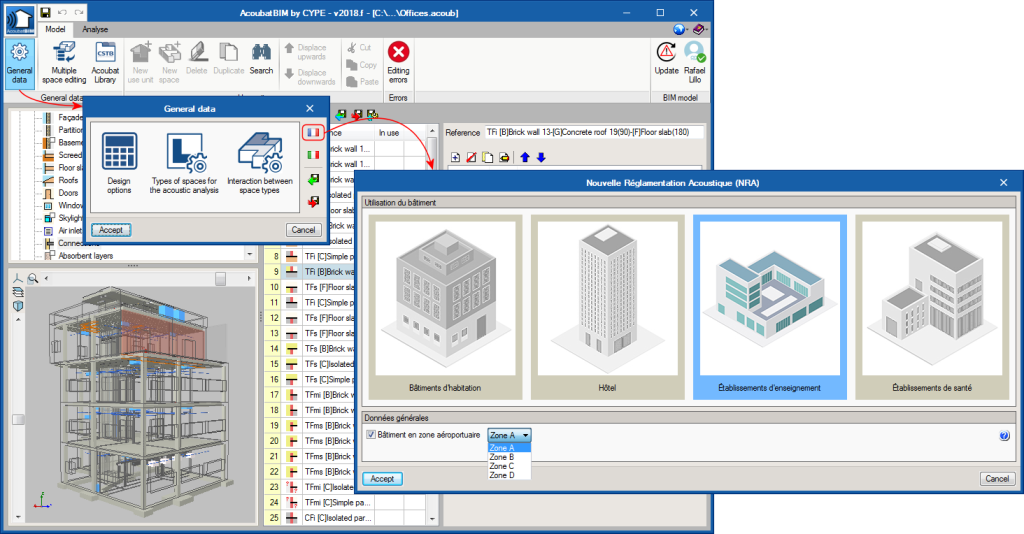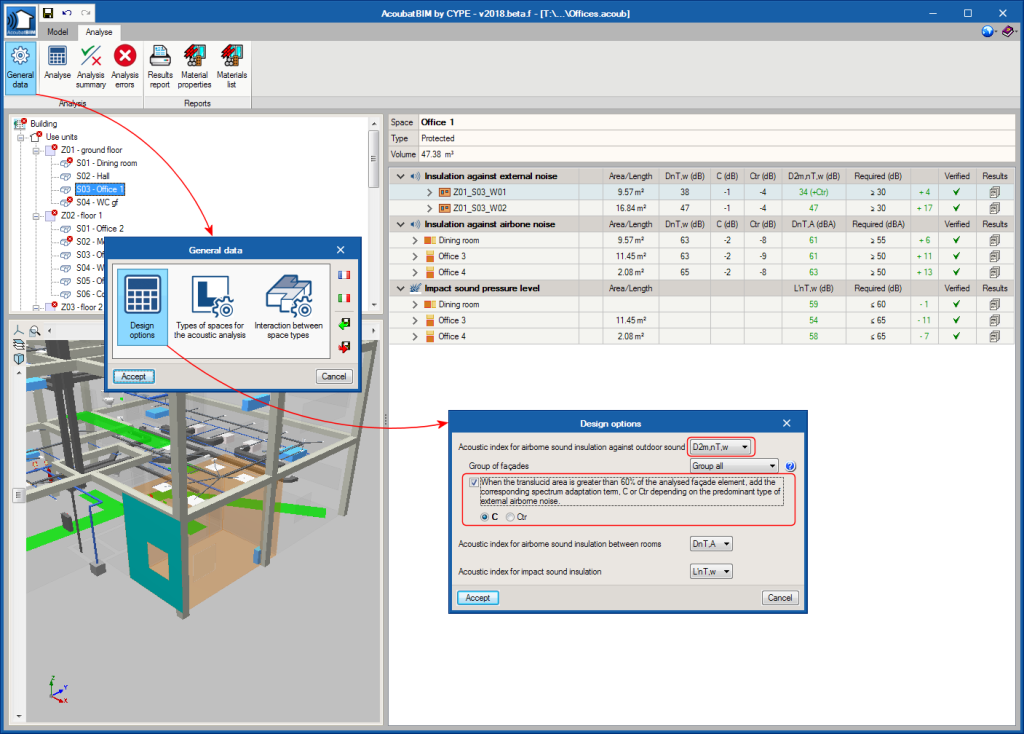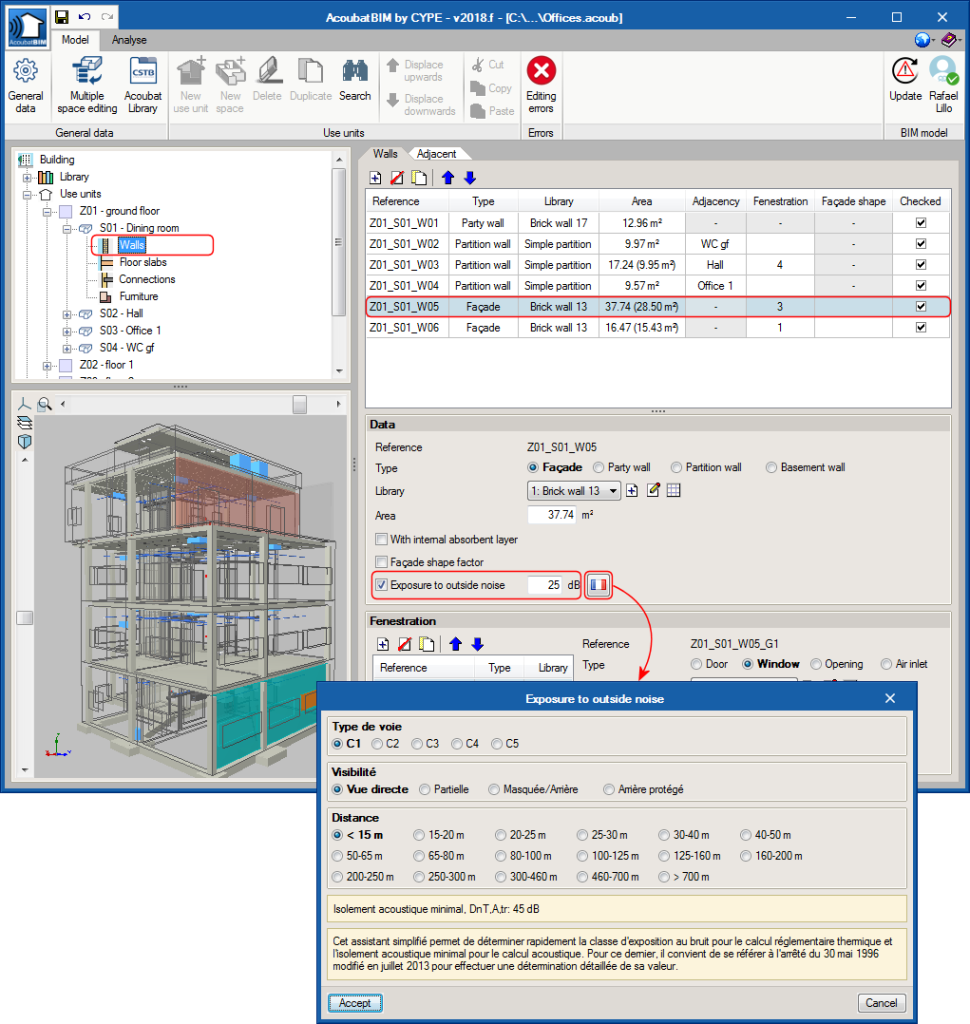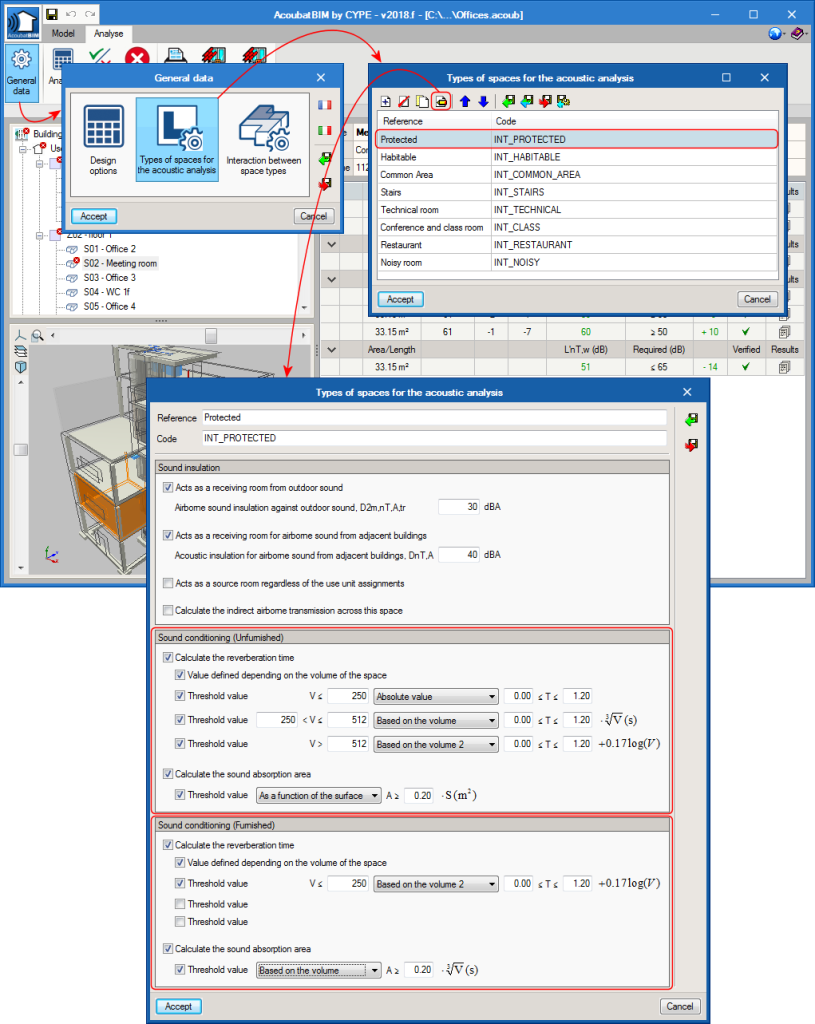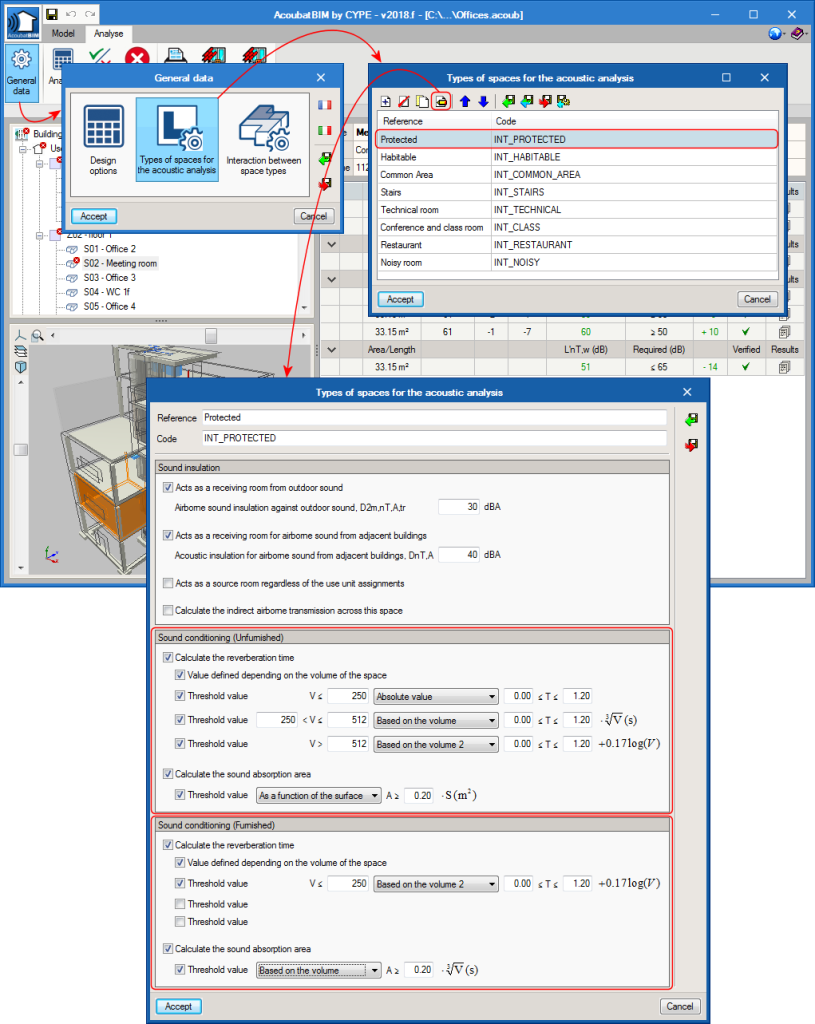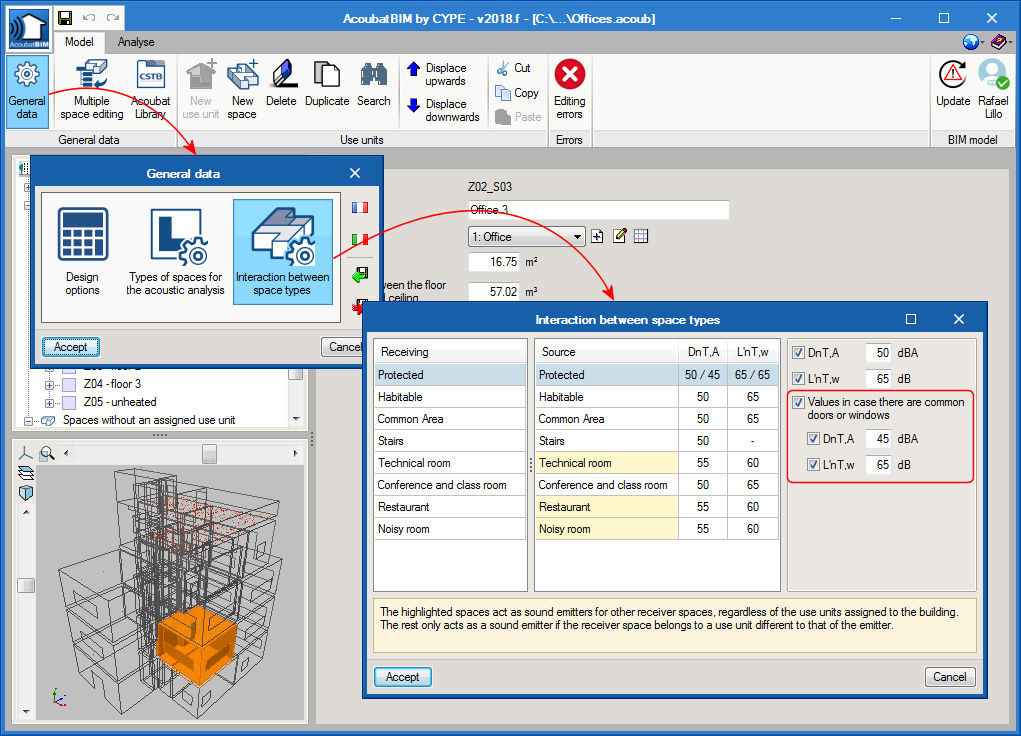As well as interpreting the geometry of the project, now it is possible to read and interpret indoor sound sources defined in the BIM model, this way, increasing the degree of integration of AcoubatBIM in the Open BIM workflow. The IFC entities that are recognised by the application, and can be exported to the BIM project by other Open BIM programs of CYPE, include:
- Bathtubs and showers
These objects, together with the remaining sanitary equipment, can be introduced using the free BIM modeller, IFC Builder. - Terminal air conditioning duct elements
This consists of grilles and diffusers. To insert these devices, the BIM program for design of air conditioning installations can be used: CYPETHERM HVAC. - VRF, Multi-split and Split 1x1 systems
The same way grilles and diffusers can be introduced in CYPETHERM HVAC.
Sound sources can be imported from the BIM model using this version of CYPESOUND and its corresponding versions to verify the acoustic requirements of national codes (CYPESOUND CTE, CYPESOUND RRAE and CYPESOUND DRAPDE).


